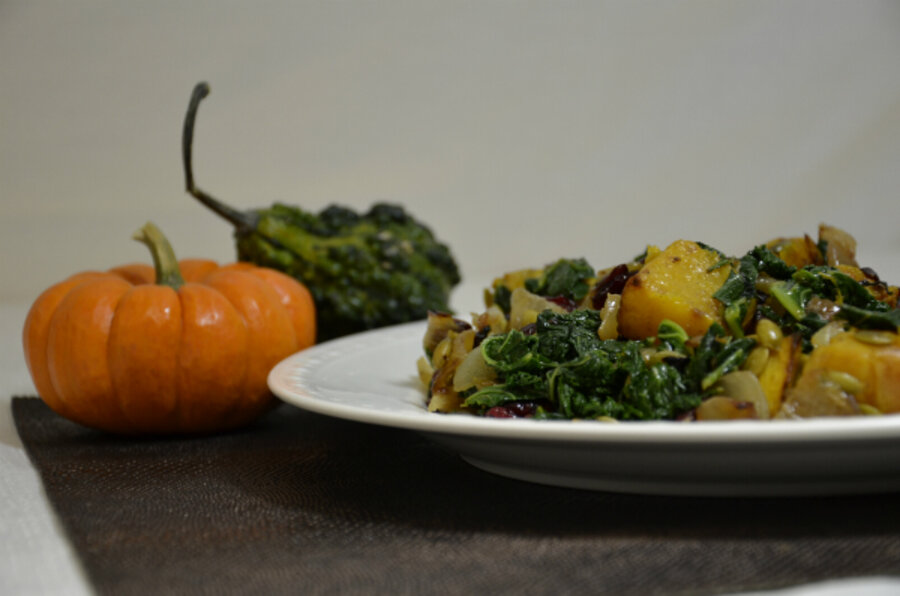By Kendra Nordin, Kitchen Report
Looking for new ideas to make use of pumpkin seeds? Here are two recipes that use pumpkin seeds to enhance tasty fall dishes.
Recipe from Maria Zoitas of “Maria’s Homemade”
1 medium size butternut squash – about 2 lbs. peeled, seeded and cut into 1-inch cubes
1 teaspoon salt (kosher)
1/2 teaspoon clove powder
1/2 teaspoon nutmeg
1/2 cup olive oil, divided
8 cups of water
1 bunch of kale, remove stems and slice into one inch wide pieces
1 medium size white onion peeled and 1/4-inch diced
1/2 cup dried cranberries
1/2 cup toasted and shelled pumpkin seeds
1. Preheat oven to 400 degrees F.
2. In a medium bowl, toss the butternut squash with salt, clove, nutmeg and 1/4 cup olive oil.
3. Place the butternut squash in a 9"x8" sheet pan and bake for 20-25 minutes at 400 degrees F. Remove from oven and let cool to room temperature.
4. In the meantime, bring the water to a boil and blanch the kale for 3-4 minutes. Remove the kale with a slotted spoon or tongs and place in a bowl of cold water to stop the cooking, drain, and set aside.
5. In a sauté pan, heat the remaining oil and sauté the onion for about 5 minutes until translucent. Add the cranberries and auté for 2 minutes, then add the pumpkin seeds, and stir over heat for an additional minute.
6. Combine the roasted butternut squash, kale, onion mixture in a large bowl or serving dish and serve.






